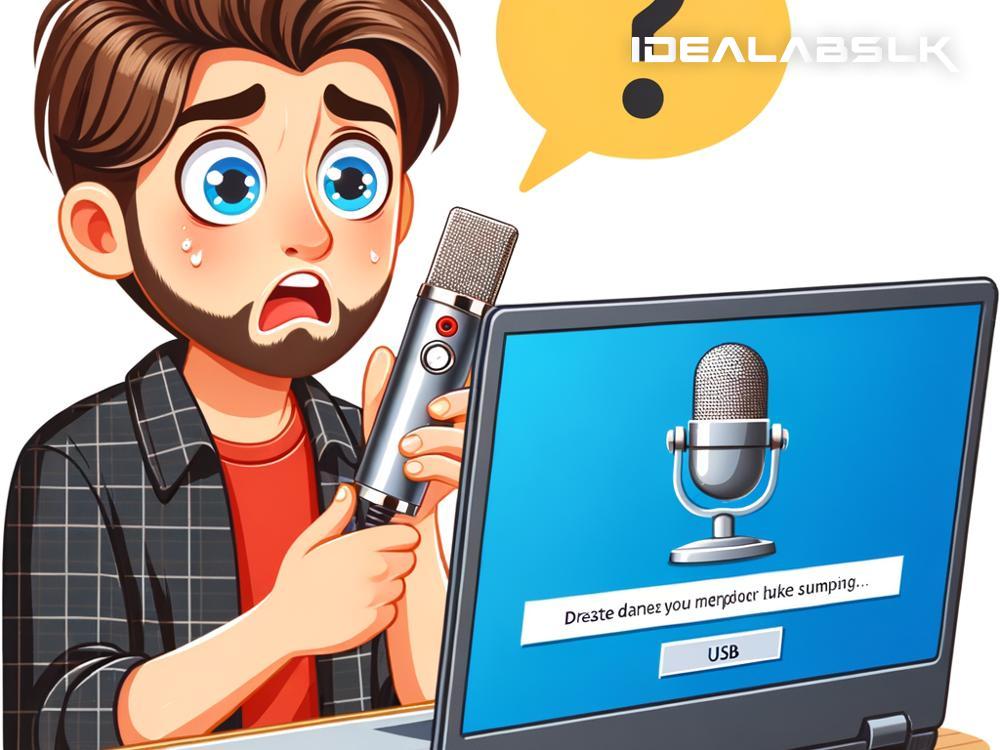How to Resolve 'External Microphone Not Detected' on Windows
Have you ever been ready to chat with friends online, record your new podcast episode, or start a crucial conference call, only to find out your computer stubbornly refuses to recognize your external microphone? It's a frustrating scenario, to say the least. Fortunately, resolving this issue on a Windows PC is often simpler than it appears. In this article, we'll explore practical steps you can take to get your microphone back in working order.
Step 1: Check the Basics
Before diving into more complex solutions, let's start with the basics. Make sure your microphone is properly connected to your computer. If it's a USB microphone, try plugging it into a different USB port. Sometimes, the problem is as simple as a faulty USB port. For microphones that use a jack plug, ensure it's securely connected to the mic input and not the headphone output.
It's also worth checking if the microphone itself is turned on (some have an on/off switch) and if all cables are intact and properly connected. A quick test with another device, like another computer or a smartphone (with the appropriate adapter), can help you determine if the microphone is functioning correctly.
Step 2: Tinker with Sound Settings
Windows has various settings that can affect whether your external microphone is detected and how it's used. To access these settings:
- Open the Control Panel: You can do this by typing "Control Panel" in the search bar next to the Start menu and clicking on the result.
- Click on 'Hardware and Sound', then go to 'Sound'.
- In the Sound window, switch to the 'Recording' tab. Here, you should see a list of audio recording devices, including your external microphone.
- If your microphone isn't listed, right-click in the blank area of the window and make sure both 'Show Disabled Devices' and 'Show Disconnected Devices' are checked. If your microphone appears, right-click on it and select 'Enable'.
Sometimes, setting your external microphone as the default device does the trick. Right-click on it and choose 'Set as Default Device'.
Step 3: Update Your Audio Drivers
Outdated or corrupted audio drivers can lead to a variety of sound problems, including your computer not recognizing an external microphone. To update your audio drivers:
- Right-click on the Start menu and select 'Device Manager'.
- Find and expand the 'Sound, video, and game controllers' section.
- Right-click on your audio device (it might be listed as 'Realtek High Definition Audio', 'Intel Audio', etc.) and select 'Update driver'.
- Choose 'Search automatically for updated driver software' and follow the on-screen instructions.
If Windows doesn't find a new driver, you can visit the website of your sound card or motherboard manufacturer to download and install the drivers manually.
Step 4: Run the Windows Troubleshooter
Windows has a built-in tool for diagnosing and resolving various issues, including audio problems. To run the audio troubleshooter:
- Go to Settings by clicking the gear icon in the Start menu or pressing Windows + I.
- Navigate to 'Update & Security' > 'Troubleshoot'.
- Click on 'Recording Audio' and then 'Run the troubleshooter'.
- Follow the prompts to let Windows diagnose and fix any detected issues.
Step 5: Check Privacy Settings
Windows 10 and Windows 11 include privacy settings that can block apps from accessing your microphone. To adjust these settings:
- Open Settings and go to 'Privacy' (Windows 10) or 'Privacy & security' (Windows 11).
- Select 'Microphone' from the sidebar.
- Make sure 'Allow apps to access your microphone' is turned on.
- Below, you can manage microphone access for individual apps as needed.
Conclusion
Not being able to use an external microphone can disrupt your plans, whether for work or leisure. However, by following the steps outlined above, you stand a good chance of resolving the issue swiftly. Start with the basics, like checking physical connections, and proceed through software checks and settings adjustments. Often, the solution is simpler than expected, and you'll be back to using your microphone in no time.
Remember, technology can sometimes be finicky, and a little patience goes a long way. If you've tried all these steps and still face issues, consider seeking help from a professional or the microphone manufacturer's customer support. Happy chatting, recording, and conferencing!

